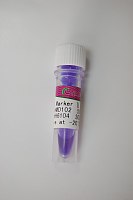Localization of HIV-1 DNA and Tumor Necrosis Factor-α mRNA in Human Brain Using Polymerase Chain Reaction In Situ Hybridization and Immunocytochemistr
互联网
498
We have had a long term interest in the neuropathogenesis of human immunodeficiency virus (HIV)-associated neurological diseases. Neurological disease is a prominent feature of HIV-1 infection, usually occurring during the late stages of acquired immunodeficiency syndrome (AIDS). infections and neoplasms in the brain arise as a consequence of severe immunosuppression, and HIV infection of the brain has been implicated in the pathogenesis of a progressive cognitive decline termed HIV-associated dementia. In light of the clinical evidence for neuronal dysfunction in HIV-related neurological disease and the pathological evidence for loss of neurons, a puzzling feature of brain infection with HIV is that the overwhelming productively infected cells are brain macrophages and microglia, and not cells of neuroectodermal origin such as neurons, astrocytes, and oligodendrocytes. This has been demonstrated repeatedly in many laboratories by the methods of immunocytochemistry for detection of HIV proteins and by in situ hybridization (ISH) for HIV RNA.








